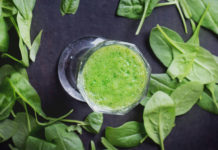by: Dr. Craig A. Maxwell
Do you get chronic yeast infections? Do you suffer from any digestive disorders? How about food allergies, fatigue, diarrhea, unexplained muscle pain, itchy skin, or constipation? All of these symptoms may be indicative of a health disorder known as chronic candida (yeast) overgrowth. When you have this syndrome, the normal, minimal amounts of yeast in your GI tract become dominant, causing many symptoms. This article will explain the signs and symptoms of chronic candida overgrowth and offer practical solutions you can implement at home today.
What is Chronic Candida Yeast Syndrome?
Candida albicans is a type of yeast that lives naturally in the gut, vaginal tract, mouth, and skin. When this natural yeast is in balance with living bacteria in your body, all is well. However, when candida grows out of control, serious illness can result. This overgrowth of candida is known by different names such as candida yeast syndrome, chronic candidiasis, or candida overgrowth. It is at this point that the abundance of yeast can cause conditions such as leaky gut syndrome.
Candida albicans is a fungus that produces 180 chemical toxins that can be absorbed through the intestines into the blood. Just think about what 180 toxins can do to your immune system. Any “foreign chemical” in the blood stream has the ability to create inflammatory reactions. These inflammatory reactions can be measured by various blood tests.
In the case of yeast overgrowth, leaky gut syndrome occurs when yeast colonies grow out of control. These yeast colonies have the ability to multiply to the point where they reach a “critical mass” which causes them to change from a round budding stage to a thread-like tissue invading stage. At this point they are running out of nutrients and expand their territory into the small intestine from their main home in the large intestine.
In the small intestine, the yeast threads are able to poke microscopic holes in the intestinal lining, hence the name “leaky gut.” This allows all 180 toxins to cross back into the blood stream, along with bacterial toxins, undigested food molecules, and other chemicals. These microscopic holes are not large enough to allow the yeast to enter the blood stream, so the blood itself is not infected with yeast, but it carries hundreds of waste products that cause inflammation throughout the body.
Yet many still think of yeast only as a recurrent vaginitis, thrush, or skin rash, often ignoring the fact that yeast overgrowth is deeply associated with our current epidemic of inflammation!
What Causes Candida Overgrowth?
The most common causes of candida overgrowth are:
- Prolonged Antibiotic Use – For example, a child with a history of chronic ear, nose, and throat infections may spend the better part of their childhood on and off antibiotics. Since their tendency toward chronic illness indicates a weak immune system and low gut bacteria in the first place, the antibiotics only succeed in killing off more healthy bacteria and further weakening the immune system. The antibiotic may fight off the infection but it leaves the immune system chronically weakened and susceptible to attacks from both outside and inside the body.

- Immunosuppressive Drugs – Immunosuppressive drugs commonly used to treat organ transplant patients and those suffering from autoimmune disease may also cause chronic candida. Any drug that suppresses natural, healthy gut bacteria for long periods of time can contribute to yeast overgrowth.
- Diet High in Processed Foods and Sugar – A diet high in processed foods such as refined grains and sugars feeds the yeast in your body and causes it to overgrow. Processed foods also contain little to no nutritional value. When you fill your gut but do not nourish your body, you’re building the perfect environment for yeast.

- Excessive Alcohol Consumption – Another way to quickly deplete the healthy bacteria in your gut is to consume too much alcohol. It’s another way to “feed the yeast” while depleting the “good bacteria” in your gut. For optimal health, I recommend my patients avoid alcohol altogether.
Signs and Symptoms
The signs and symptoms of candida are wide and varied. Because of this, it’s often hard for conventional doctors to pin down. As a matter of fact, most physicians do not even acknowledge the presence of this debilitating condition. This can leave patients feeling frustrated and helpless as their condition worsens and health care providers simply shake their heads.
Do some or all of these symptoms sound familiar?

- Recurrent Oral Thrush
- Chronic Gas and Bloating
- Heartburn
- Rectal Itching
- Headaches
- Muscle Aches
- Vaginitis
- Chronic Yeast Infections
- Brain Fog
- Mood Swings
- Depression
- Low Libido
- Learning Difficulties
- Itchy Skin
- Psoriasis/Eczema
- Chronic Sinusitis
- Allergies (Food, Hay Fever, Chemical)
- Dizziness
- Bad Breath
- Numbness and Tingling
- Infertility
- IBS
- Insomnia
- Persistent Sore Throat
- White tongue
- Acne
- Persistent Bronchitis
- PMS
If you’re experiencing five or more of these symptoms, you may have chronic candida overgrowth. The next step to treating your condition is getting an accurate diagnosis.
Getting a Diagnosis
One of the most frustrating factors of living with chronic candida is getting an accurate diagnosis. As I’ve said before, many physicians are simply not trained to properly deal with this condition.
However, there are some medical health professionals that will offer a few tests. For example, a candida antibody blood test can check to see if you’re having an allergic reaction to the yeast your body is producing. A candida stool test can test to see if your yeast levels fall within the normal range. The trouble with both of these tests is they are often inconclusive. What’s “normal” for one person might not be for the next.
Ineffective tests, frustrated patients, and puzzled physicians are the three primary reasons patients end up in my office. They’re tired of hearing, “It’s all in your head” or “We’re sorry. We don’t know why your blood test results are coming out like this. There’s no reason for it.” Here’s a big one: “All your tests came back normal. I don’t know why you are having these symptoms. Perhaps it’s stress. I recommend you see a psychiatrist.” If you have candida overgrowth, you’ll be stressed because you feel so bad and so many insinuate that it is “all in your head.” I understand, because I have seen this happen over and over to those who have come to me for evaluation and treatment over the past thirty years!
Quite often it’s just a matter of taking time to look in the right direction……..
For my patients, I recommend the Comprehensive Stool Analysis CSAP x 3 by Doctor’s Data. It takes the guesswork out of whether or not chronic candida is causing the symptoms they’re experiencing. This stool kit, which you can order online today and take in the privacy of your own home, not only accurately determines whether or not you have chronic yeast, but exactly which strain of yeast it is (there’s actually more than one) and which natural remedies are most effective against it! The stool kit doesn’t stop there. It also records digestive enzyme activity, digestion capability, good bacteria levels, bad bacteria levels, evaluation of leaky gut syndrome, GI inflammation markers to determine if IBS or IBD is present…. and parasites, also a common factor in the development of candida yeast syndrome.
How Diet Helps – What to Eat and What to Avoid
As previously discussed, diet has a lot to do with the development of chronic yeast. Here is a quick list of the foods to avoid and the foods to eat when treating candida.
Foods to Avoid:

- Sugar (Any Kind)
- Processed/Fast Food
- Gluten grains (Wheat, Barley, Rye)
- Condiments
- Mushrooms
- Legumes
- Alcohol
- Cured Meats (Bacon, Pepperoni)
- High-Mold and Processed Cheeses (Blue Cheese, Velveeta)
- Limit Fresh Fruit to two or three servings daily.
Notice I recommend some fruit each day. I feel that fruit, especially fresh organic fruit, is a very important part of a healthy diet. Certainly there is some sugar (fructose) in fruit, but my patients with candida overgrowth do quite well with this reasonable amount.
Now that you’ve read that list, you’re probably wondering what’s left to eat. Don’t worry, there’s plenty.
Foods to Eat:

- Organic Beef, Bison, Chicken, Turkey, and Fish
- Brown Rice
- Cooked Dried Beans (Black, Kidney, White, Navy)
- Non-Gluten Grains (Amaranth, Quinoa, Buckwheat)
- Organic Raw, Steamed, or Cooked Vegetables.
- Fresh Herbs (Garlic and Oregano Especially – Great Yeast Fighters)
- Nuts and Seeds (Almonds, Brazil, Cashews, Macadamia, Pumpkin, Sunflower)
- Plain Yogurt
- Almond Milk
- Rice Crackers
- Plain Rice Cereal
If you’re used to eating processed foods, switching to a whole-food candida-free diet can seem daunting at first. As your body heals, you may feel withdrawal symptoms as you detox and a healing crisis as the candida dies. Drink plenty of water and get adequate rest. The discomfort will pass and the results will be well worth your efforts.
As we know, diet is extremely important to keep yeast overgrowth at bay. However, once established, candida overgrowth really needs some additional help to make it leave. Over the years, I have designed a program which, along with diet, is very effective at eliminating yeast overgrowth.
Natural Treatments to Get Rid of Chronic Yeast Infection

Just as a change in diet can help get rid of chronic candida, so can adding some natural remedies. Here are some popular, natural remedies:
Herbs
- Pau d’Arco – This herb is a natural yeast fighter that can be taken in tea or capsule form.
- Garlic – Best eaten raw, the chemical compound allicin is responsible for its potent yeast-fighting properties. Consume some every day.
- Cayenne Pepper – A natural digestive aid, cayenne pepper can help ease the constipation associated with chronic candida infection as well as knock out the yeast itself.
- Coconut Oil – One of the most healing oils on the planet, a teaspoon of pure coconut oil taken twice daily can help eradicate yeast and heal an inflamed gut.
What Is The Best Natural Program To Rid The Body Of Candida Overgrowth?
While a healthy diet is very important, diet alone seldom rids the body of candida overgrowth.
Here’s my 8 WEEK CANDIDA-CLEANSING PROGRAM I have recommended to my patients for many years with much success:
- Candi-Calm Formula – While most microbial-balancing products focus only on one or two botanical ingredients, Candi-Calm includes a full-spectrum of potent botanicals and nutrients to ensure microbial-balancing potential while also soothing the GI lining from microbial irritations. Stool cultures and sensitivities by Doctor’s Data consistently show that the various strains of intestinal candida are sensitive to the combination of natural ingredients in Candi-Calm Formula. These include Pau D’Arco Inner Bark, Zinc Undecylentate, Sodium Caprylate, Berberine Hydrochloride, Cinnamon Bark Extract, Ginger Root, Oregano Leaf Extract, Rosemary Leaf Extract, Biotin, and German Chamomile Flower. Take 2 three times a day with food for 8 weeks.
- Ultra-Probiotic Formula – An absolute essential in your yeast-fighting arsenal. Probiotics with high colony forming units crowd out bad bacteria and reseed your ravaged gut with good bacteria. Take Ultra Probiotics, 1 packet daily for 8 weeks to re-establish specific colonies of good bacteria in the colon. After 8 weeks, I recommend changing to Probiotic Formula, one capsule a day to maintain healthy probiotic levels. Please remember that the dose, quality, and strains of your probiotic formula are extremely important.
- Foundation Vitamins Formula – If you’re currently taking a commercial multivitamin, chances are it’s of little nutritional value. Many mass produced vitamins and minerals are not well absorbed. Many have artificial ingredients we need to avoid. Still others have added sugar. They often do not have the proper dose, balance and ratio of vitamins and minerals. I recommend professional-grade products I know can achieve therapeutic blood levels, as I do laboratory testing before and after administration of the products I recommend to my patients. Take 3 Foundation Vitamins once a day with breakfast or lunch.
I recommend continuing both Foundation Vitamins Formula (3 once a day) and Probiotic Formula (1 a day) after the initial 8 week treatment to not only keep yeast overgrowth away, but as part of a good health plan to optimize the immune system.
No matter how long you’ve been suffering with chronic yeast overgrowth, your body has a remarkable ability to heal itself. All you have to do is take the first step by making some changes to your diet and implementing some necessary natural treatments.









I think I may have this issue! My skin I’d itchy and always feels like something is crawling on me. Especially my face and legs. My breath smells like my poo and I always have a bitter metallic taste in my mouth. It’s not an oral issue but the smell is coming from my belly. So, I truly may have candid.
Hello Ms. Mills,
Thank you for contacting me. Based on the symptoms you mention, it is quite possible.
Chronic GI candidiasis can be diagnosed and treated as outlined in the article. Please feel free to give me a call at 513-741-4404 if you would like to schedule a telemedicine consultation.
Warmest Regards,
Dr. Maxwell
Will insurance pay for the telemedicine consultation?
Hello Ms. Jones,
Thank you for contacting me. At this time, most insurance does not cover telemedicine consultations.
Please feel free to contact me through our Q & A page at http://www.AskDrMaxwell.com.
Dr. Maxwell
Can Tea tree oil help with these infections?
Hi Diane,
Tea tree oil has been shown to help some patients, but not by itself. In my opinion, it should be used as part of a comprehensive program.
Candida can be quite stubborn. Part of my comprehensive program includes Candi-Calm and Ultra Probiotics together for two months to eliminate
yeast overgrowth and balance the GI tract with good bacteria. This program, along with a healthy diet as also outlined in the article, has helped many
of my patients over the years.
I believe you will find it quite effective, as so many have.
Dr. Maxwell
My daughter has been put on nystatin for over a month now. Looks like they are going to prescribe another month.
When she stops the pill all the itching and pain comes back.
She also has other Dx – lyme , Narcolpesy , dysautonomia .
Two of the three candidas markers in her blood were above normal when tested in May
Any comments on the nystatin.
Can adderol affect things and a sleeping med that has a lot of salt.
Should she go off nystatin and do your protocol
What is the price of a phone consult
Hello Susan,
Thank you for contacting me. I am sorry to hear about your daughter. Please contact me through drcraigmaxwell@roadrunner.com so I may find out more about your daughter and discuss a consultation.
All my best,
Dr. Maxwell